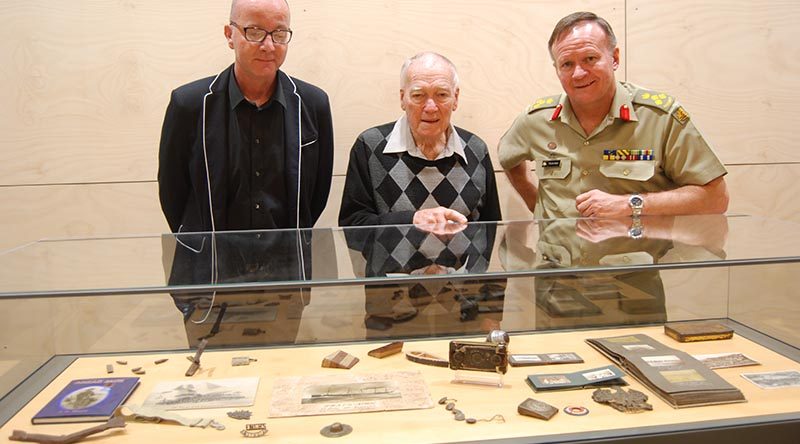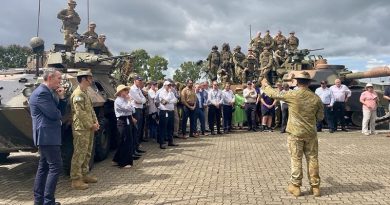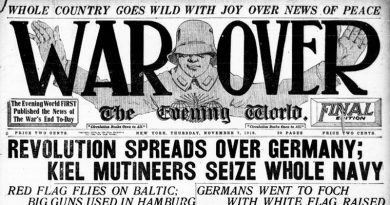Special donation to Army Museum of Military Engineering
Share the post "Special donation to Army Museum of Military Engineering"

By LTCOL Christopher Holcroft
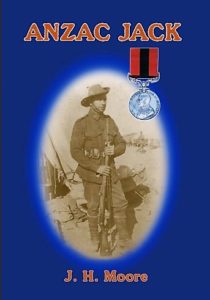 Imagine being a four-year-old boy and being told your former World War One soldier father had been drinking and died in a car accident. Then 70 years later you discover he took his own life because of the impending Great Depression.
Imagine being a four-year-old boy and being told your former World War One soldier father had been drinking and died in a car accident. Then 70 years later you discover he took his own life because of the impending Great Depression.
This is what faced New Zealander Jack Hoey Moore Junior. His way around the tragedy to help both himself and others, was to write a book about his father called ‘Anzac Jack’ (W. J. Deed 2004) which is available free on the internet.
Head of Corps for the Royal Australian Engineers (RAE) and Commander of the Australian Army Cadets, Brigadier Wayne Budd, paid tribute to Sapper Moore and the other Army engineers who went to Gallipoli in World War One.
He was at a ceremony at the Australian Army Museum of Military Engineering recently.
On behalf of the RAE he accepted the special donation of memorabilia and historical items Jack Moore Junior collected from his father’s belongings and donated to the Australian Army Museum of Military Engineering at Holsworthy, NSW.
“One of the things that happen in any military is the esprit de corps which is built around our heritage,” BRIG Budd told a gathering of more than 30 friends and family of Jack Moore Junior at the handover of the special Great War collection to the Curator of the Museum, Mr Sebastian Spencer.
“It’s about soldiers who have gone before us – their deeds and valour are what build the customs and traditions of an army or a Corps like the RAE. It underpins the values and drive of the soldiers of today.
“History is very important to any army and in particular to the RAE. We as a Corps have a proud history dating back to Federation and you are all part of the RAE family in some way.”
BRIG Budd said the Engineers had stored their displays and archives in a series of buildings since 1939. He said the Australian Government agreed to build the current state of the art museum at Holsworthy when it was redeveloping the site.
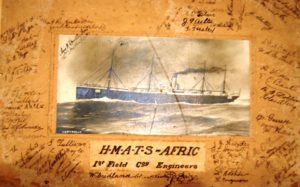
Mr Jack Moore Junior, 91, lives on the Coromandel Peninsula in New Zealand’s North Island. He said his father was a New Zealand engineer who went to Sydney in 1911 and volunteered for the Australian Army when war broke out.
“My father was assigned to the 1st Field Company Engineers and then the 14th Field Company Engineers with the regimental number of 101,” Mr Moore said.
“On the way to Gallipoli in 1914 the HMATS Afric [Afric] (A19) stopped at Cape Town in South Africa to allow the troops some shore leave and Jack met some people there.
“In early 1918 he was sent back to Australia for a three-month furlough because he had done a lot of war service. On his return to the western front he called in again to Cape Town to see the people he had met earlier.
“In my father’s letters he said there was a big party going on and someone yelled out: ‘It’s Anzac Jack’ so I used that as the title of my book.”
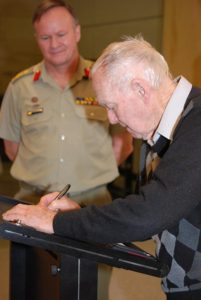
Mr Moore said his book is about his father through his letters and other documents left for him. He wrote it so other families may understand the hardship experienced by soldiers who suffered depression and the impact on their family.
“My father committed suicide in 1929 when I was aged four. My mother kept the letters and his other paraphernalia in a tin cabin trunk. Five years after my father died my mother re-married when I was aged nine,” he said.
“I couldn’t ask much about my father as it was delicate having a stepfather. One of my aunts told me the story of my father around forty years after he died. I was instantly interested in finding out more about him.
“When my mother died my stepfather gave me the tin trunk and this began my journey to write about my father. All I did was translate his letters as his handwriting wasn’t too bad.”
Among the bullets, bits of webbing, wood work and a camera in his father’s belongings was a photo of HMATS Afric with all the signatures of his mates including his own – it’s believed to be one of the only prints with the signatures.
There is also a steel camera Sapper Moore smuggled onto Gallipoli with many photos he took during the various stages of the fighting.
The letters and diaries of the families present confirm the location of the Sappers of the 1st Field Company Engineers in the front of the boats spread across the 9th, 10th and 11th Battalions at the Gallipoli landings on 25th April 1915.
BRIG Budd said the availability of these letters and diaries is allowing the production of a more complete history of deeds of our World War One Engineers in a new history book.
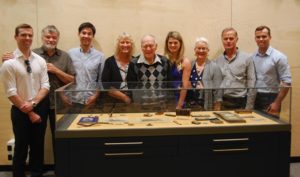
.
.
.
.
.
.
.
.

.
.
Share the post "Special donation to Army Museum of Military Engineering"

